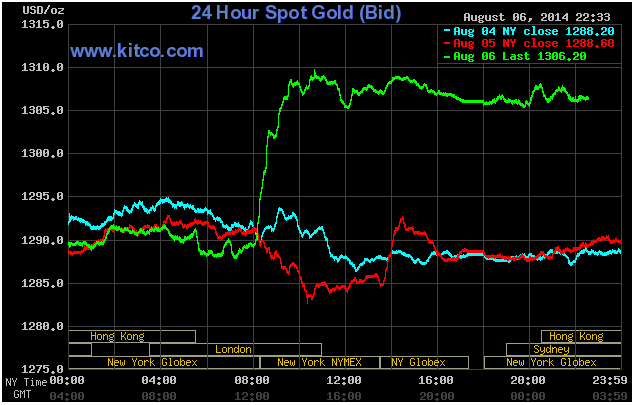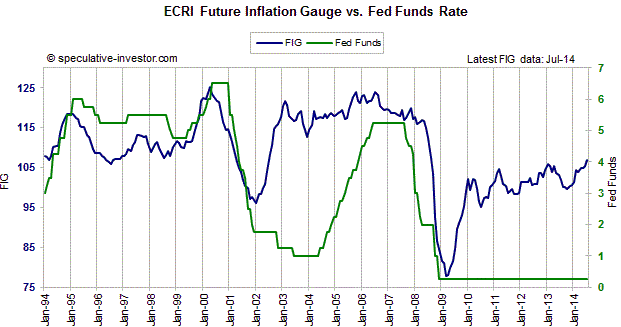Speculators, not commercial traders, drive price trends in the gold market. The proof of this is the simple fact that the speculative net-long position in gold futures almost always trends in the same direction as the gold price (an increase in the speculative net-long position almost always accompanies an increase in price and a decrease in the speculative net-long position almost always accompanies a decrease in price). It is therefore fair to say that in the gold market, speculators are price makers and commercials are price takers.
An example is the 2-week period ended 1st July 2014. During this period a definitive upward reversal in the short-term price trend coincided with a large increase in the speculative net-long position. Specifically, the price quickly rose from $1272 to $1328 while the speculative net-long position in COMEX gold futures jumped by about 80K contracts.
As dictated by basic arithmetic, the 80K-contract increase in the speculative net-long position during the 2-week period ended 1st July went hand-in-hand with an 80K-contract increase in the commercial net-short position. These changes in the speculative and commercial positions are two sides of the same coin. One would not be possible without the other.
In general terms, speculators, as a group, could never increase their long exposure to gold futures unless commercial traders (primarily bullion banks), as a group, were prepared to take the other side of the trade and increase their short exposure to gold futures, and speculators could never reduce their net-long position (or become net-short) unless commercials were prepared to reduce their net-short position (or become net-long). This means that those commentators who rail against the short-selling of gold futures by bullion banks and other commercial traders are effectively railing against the buying of gold futures by speculators.
Moving on, a superficial comparison of the gold price and the commercial net-position in gold futures could lead to the conclusion that the commercials are always on the wrong side of the market, except at short-term price extremes. For example, ‘the commercials’ were relentlessly net-long during the final six years of gold’s 1980-2001 secular bear market and have been relentlessly net-short since the beginning of gold’s secular bull market. Looking only at futures positioning could therefore lead to the impression that the commercials have lost a fortune trading gold, but such an impression would be wrong. The reality is that the bullion banks (the biggest commercial traders) generally don’t care which way the gold price trends, because they generally don’t make their money by betting on price trends. Instead, their goal is to make money regardless of price direction by taking advantage of spreads (for example, spreads between the cash and futures prices and spreads between different futures contracts) and the charging of commissions.
 Print This Post
Print This Post


